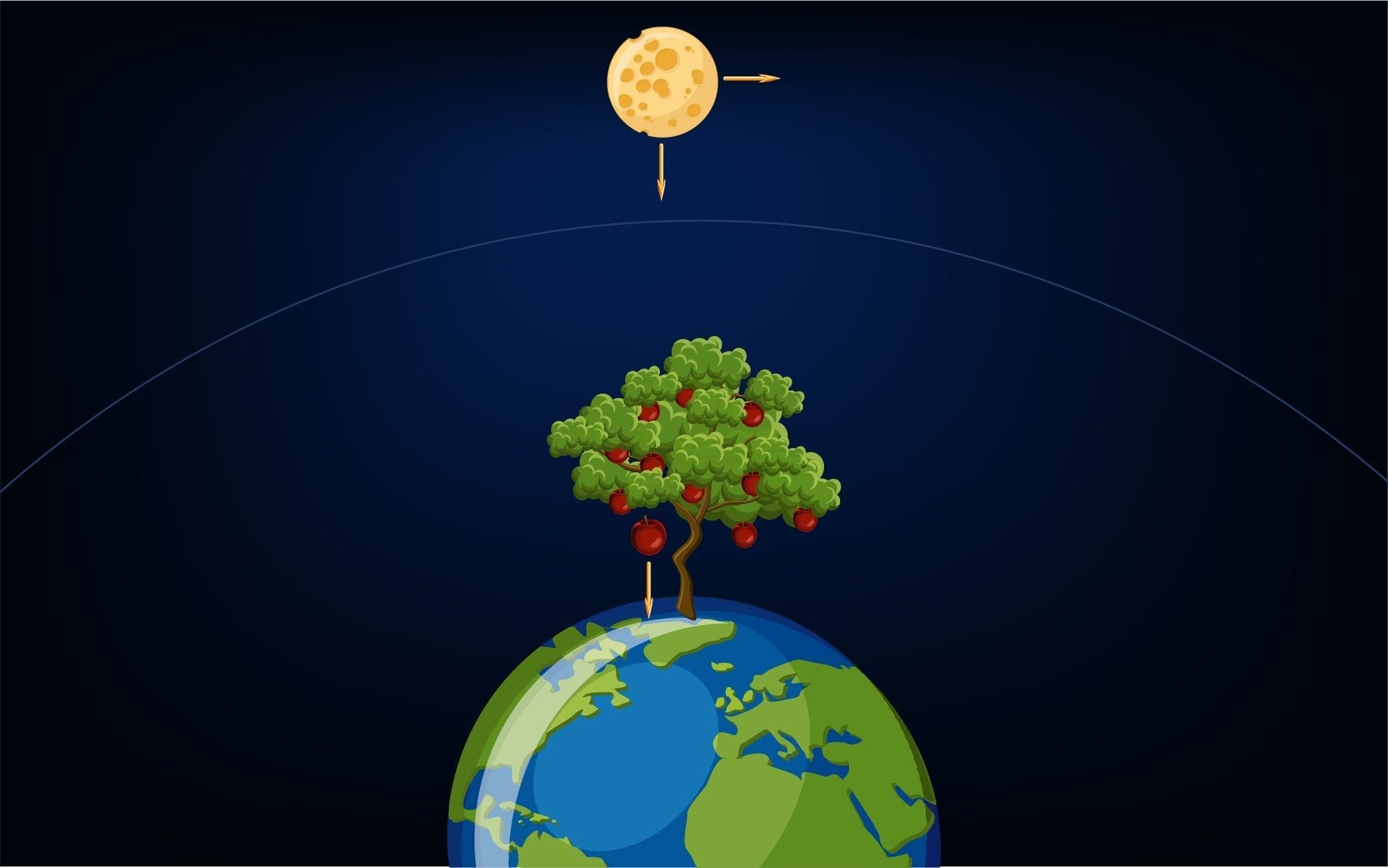Gravitation: Everybody attracts other body by a force called force of gravitation
Newton’s law of Gravitation: force of gravitational attraction between two point bodies is directly proportional to the product of their masses and inversely proportional to the square of the distance between them.
Consider two point bodies of masses m1 and m2 placed at a distance r. Force of gravitational attraction between them, F=G m12m2/r2 , where G is universal gravitational constant Value of G is 6.67 x 10-11 Nm2/kg2.
Gravity: The gravitational force of earth is called gravity i.e. gravity is the force which earth pulls a body towards its centre.
The acceleration produced in a body due to force of gravity is called acceleration due to gravity (denoted as g) and its value is 9.8 m/s2.
Acceleration due to gravity is independent of shape, size and mass of the body.
Variation in g
1. value of g decreases with height or depth from earth’s surface 2. g is maximum at poles. 3. g is minimum at equator. 4. g decreases due to rotation of earth. 5. g decreases if angular speed of earth increases and increases if angular speed of earth decreases.
>> If angular speed of earth becomes 17 times its present value, a body on the equator becomes weightless.
Weight of a body in a lift
1. If lift is stationary or moving with uniform speed (either upward or down ward), the apparent weight of a body is equal to its true weight.
2. If lift is going up with acceleration, the apparent weight of a body is more than the true weight.
3. If lift is going down with acceleration, the apparent weight of a body is less than the true weight.
4. If the cord of the lift is broken, it falls freely. In this situation the weight of a body in the lift becomes zero. This is the situation of weight- lessness.
5. While going down, if the acceleration of lift is more than acceleration due to gravity, a body in the lift goes in contact of the ceiling of lift.
Kepler’s Laws of planetary motion
- All planets move around the sun in elliptical orbits, with the sun being at rest at one focus of the orbit.
- The position vector of the planet with sun at the origin sweeps out equal area in equal time i.e. The areal velocity of planet around the sun always remains constant.
A consequence of this law is that the speed of planet increases when the planet is closer to the sun and decreases when the planet is far away from sun.
Speed of a planet is maximum when it is at perigee and minimum when it is at apogee.
- The square of the period of revolution of a planet around the sun is directly proportional to the cube of mean distance of planet from the sun.
If T is period of revolution and r is the mean distance of planet from sun then T2 ∝ r3
Clearly distant planets have larger period of revolution. The time period of nearest planet Mercury is 88 days where as time period of farthest planet Pluto is 247.7 years.
Satellite: Satellites are natural or artificial bodies revolving around a planet under its gravitational attraction. Moon is a natural satellite while INSAT-IB is an artificial satellite of earth.
Orbital speed of a satellite
- Orbital speed of a satellite is independent of its mass. Therefore satellites of different masses revolving in the orbit of same radius have same orbital speed.
- Orbital speed of a satellite depends upon the radius of orbit (height of satellite from the surface of earth). Greater the radius of orbit, lesser will be the orbital speed.
>> The orbital speed of a satellite revolving near the surface of earth is 7.9 km/ sec.
Period of Revolution of a satellite: Time taken by a satellite to complete one revolution in its orbit is called its period of revolution.
i.e. period of revolution = circumference of orbit orbital speed
- Period of revolution of a satellite depends upon the height of satellite from the surface of earth. Greater the height, more will be the period of revolution.
- Period of revolution of a satellite is independent of its mass.
>> The period of revolution of satellite revolving near the surface of earth is l hour 24 minute (84 minute)
Geo-Stationary Satellite: If a satellite revolves in equatorial plane in the direction of earth’s rotation i.e. from west to east with a period of revolution equal to time period of rotation of earth on its own axis i.e. 24 hours, then the satellite will appear stationary relative to earth. Such a satellite is called Geo-stationary satellite. Such a satellite revolves around the earth at a height of 36000 km. The orbit of Geostationary satellite is called parking orbit. Arthur C. Clarck was first to predict that a communication satellite can be stationed in the geosynchronous orbit.
Escape velocity: Escape velocity is that minimum velocity with which a body should be projected from the surface of earth so as it goes out of gravitational field of earth and never return to earth.
>> Escape velocity is independent of the mass, shape and size of the body and its direction of projection.
>> Escape velocity is also called second cosmic velocity.
>> For earth, escape velocity = 11.2 km/s. For moon, escape velocity = 2.4 km/s.



